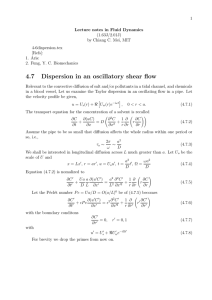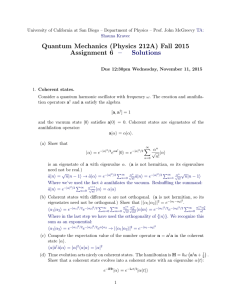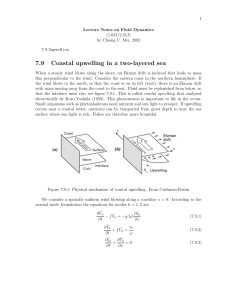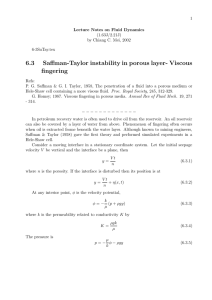18.303 Problem Set 6 Problem 1: Another minimization theorem
advertisement
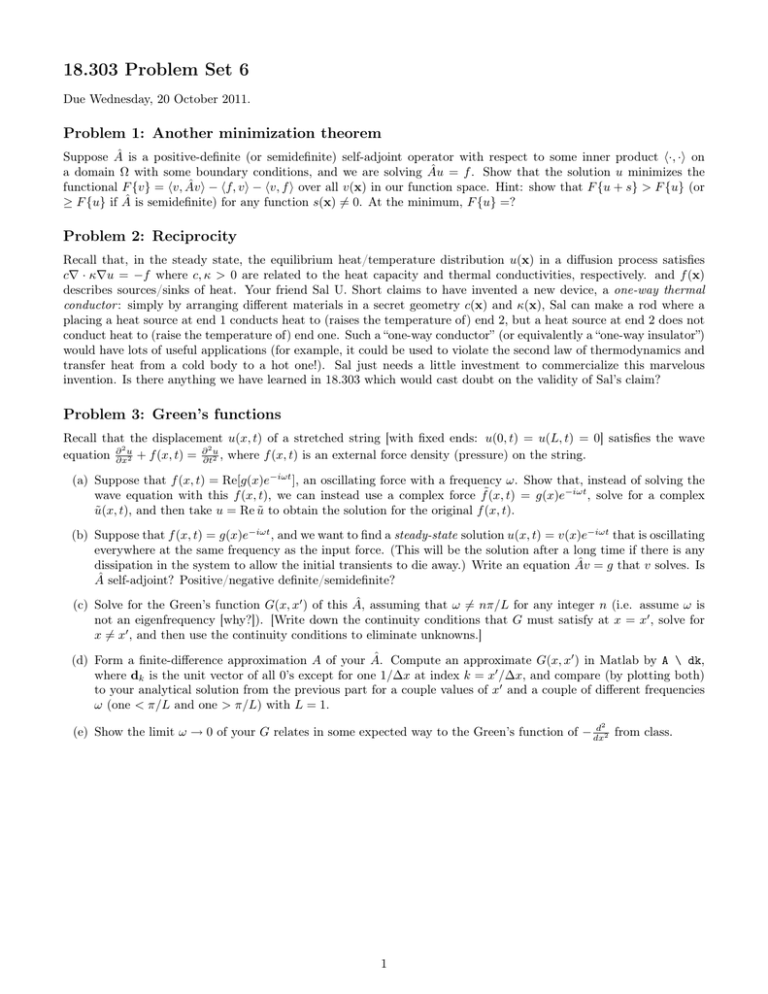
18.303 Problem Set 6
Due Wednesday, 20 October 2011.
Problem 1: Another minimization theorem
Suppose  is a positive-definite (or semidefinite) self-adjoint operator with respect to some inner product h·, ·i on
a domain Ω with some boundary conditions, and we are solving Âu = f . Show that the solution u minimizes the
functional F {v} = hv, Âvi − hf, vi − hv, f i over all v(x) in our function space. Hint: show that F {u + s} > F {u} (or
≥ F {u} if  is semidefinite) for any function s(x) 6= 0. At the minimum, F {u} =?
Problem 2: Reciprocity
Recall that, in the steady state, the equilibrium heat/temperature distribution u(x) in a diffusion process satisfies
c∇ · κ∇u = −f where c, κ > 0 are related to the heat capacity and thermal conductivities, respectively. and f (x)
describes sources/sinks of heat. Your friend Sal U. Short claims to have invented a new device, a one-way thermal
conductor : simply by arranging different materials in a secret geometry c(x) and κ(x), Sal can make a rod where a
placing a heat source at end 1 conducts heat to (raises the temperature of) end 2, but a heat source at end 2 does not
conduct heat to (raise the temperature of) end one. Such a “one-way conductor” (or equivalently a “one-way insulator”)
would have lots of useful applications (for example, it could be used to violate the second law of thermodynamics and
transfer heat from a cold body to a hot one!). Sal just needs a little investment to commercialize this marvelous
invention. Is there anything we have learned in 18.303 which would cast doubt on the validity of Sal’s claim?
Problem 3: Green’s functions
Recall that the displacement u(x, t) of a stretched string [with fixed ends: u(0, t) = u(L, t) = 0] satisfies the wave
2
2
equation ∂∂xu2 + f (x, t) = ∂∂t2u , where f (x, t) is an external force density (pressure) on the string.
(a) Suppose that f (x, t) = Re[g(x)e−iωt ], an oscillating force with a frequency ω. Show that, instead of solving the
wave equation with this f (x, t), we can instead use a complex force f˜(x, t) = g(x)e−iωt , solve for a complex
ũ(x, t), and then take u = Re ũ to obtain the solution for the original f (x, t).
(b) Suppose that f (x, t) = g(x)e−iωt , and we want to find a steady-state solution u(x, t) = v(x)e−iωt that is oscillating
everywhere at the same frequency as the input force. (This will be the solution after a long time if there is any
dissipation in the system to allow the initial transients to die away.) Write an equation Âv = g that v solves. Is
 self-adjoint? Positive/negative definite/semidefinite?
(c) Solve for the Green’s function G(x, x0 ) of this Â, assuming that ω 6= nπ/L for any integer n (i.e. assume ω is
not an eigenfrequency [why?]). [Write down the continuity conditions that G must satisfy at x = x0 , solve for
x 6= x0 , and then use the continuity conditions to eliminate unknowns.]
(d) Form a finite-difference approximation A of your Â. Compute an approximate G(x, x0 ) in Matlab by A \ dk,
where dk is the unit vector of all 0’s except for one 1/∆x at index k = x0 /∆x, and compare (by plotting both)
to your analytical solution from the previous part for a couple values of x0 and a couple of different frequencies
ω (one < π/L and one > π/L) with L = 1.
2
d
(e) Show the limit ω → 0 of your G relates in some expected way to the Green’s function of − dx
2 from class.
1

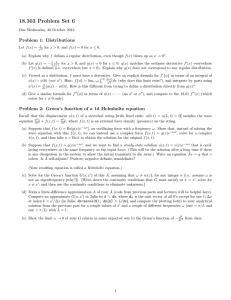
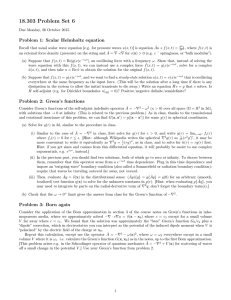
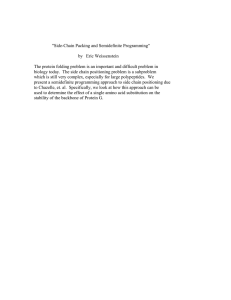
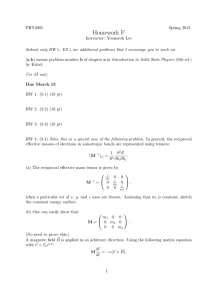
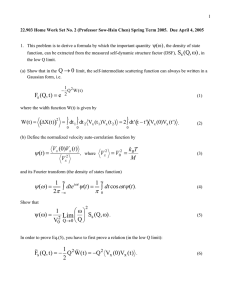

![PHYSICS 110A : CLASSICAL MECHANICS DISCUSSION #2 PROBLEMS [1] Solve the equation ...](http://s2.studylib.net/store/data/010997211_1-e584bd0bef85c1b26003f14bc9b84c94-300x300.png)
